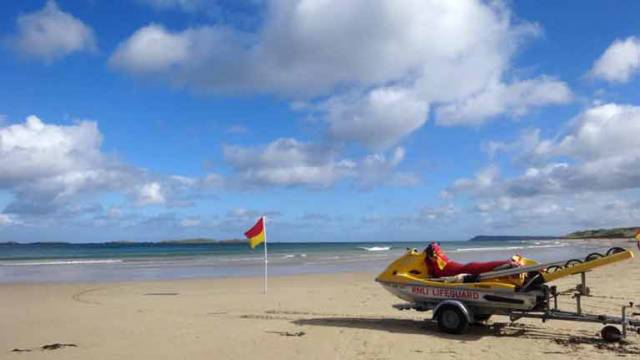RNLI lifeguards will return to five Causeway Coast beaches to provide cover during this year’s Easter holidays.
Commencing this Good Friday (14 April), lifeguards will be operating from Beach Lifeguard Units on Benone Strand, Portstewart Strand, East and West Strands in Portrush and Whiterocks.
The lifeguards will be on duty daily from 11am to 7pm up until Sunday 23 April.
Following the Easter break the lifeguards will resume a weekend duty on the five beaches on the Causeway Coast and also on Tyrella beach in County Down. Daily full time cover will commence on all eight beaches on the Causeway Coast and three in County Down on Saturday 24 June. This will run throughout the summer season finishing on Sunday 3 September. Weekend cover will continue until the end of September.
Ahead of the Easter cover resuming on Good Friday, RNLI lifeguards have spent three weeks in intensive induction training with the lifeguard management team to ensure they are fully prepared for the season ahead.
RNLI lifeguard supervisor Karl O’Neill said they are expecting a busy week: ‘Pre-season preparations have went well and our lifeguards are ready and looking forward to getting back on the beaches and doing what they do best, providing beach safety advice to visitors and helping out anyone who might find themselves in difficulty either in the water or on the beach itself.
We would remind anyone planning a trip to the beach to be mindful that particularly at this stage in the season the water is still cold. Come dressed for the weather conditions to ensure your visit is both safe and enjoyable.’
The RNLI has been working closely with its colleagues in the Causeway Coast and Glens District Council to ensure the beaches and lifeguard units are ready and equipped and that lifeguard training and preparation has been carried out seamlessly and successfully.
‘With the training complete, our lifeguards are looking forward to being back on patrol and putting their skills into action,’ Karl continued. ‘During the Easter break we would encourage visitors to speak to our lifeguards, ask for safety advice, and most importantly call on them should they find themselves in difficulty’.
The RNLI’s advice for anyone planning a trip to the beach is to respect the water, check weather and tide times before you go and if planning to go into the water, swim at a lifeguarded beach, between the red and yellow flags. Avoid using inflatables in strong winds or rough seas.
If you get into trouble, stick your hand in the air and shout for help and if you see someone else in trouble, tell a lifeguard. If you can’t see a lifeguard, call 909 or 112 and ask for the Coastguard.
Last year, lifeguards in Northern Ireland responded to 235 incidents coming to the aid of 255 people. Incidents ranged from saving a life, carrying out a rescue, assisting a casualty, providing casualty care and minor first aid to being involved in searches, near misses and incidents involving missing and found people. The lifeguards also worked closely with their colleagues at Portrush, Newcastle and Kilkeel RNLI lifeboat stations.






























































